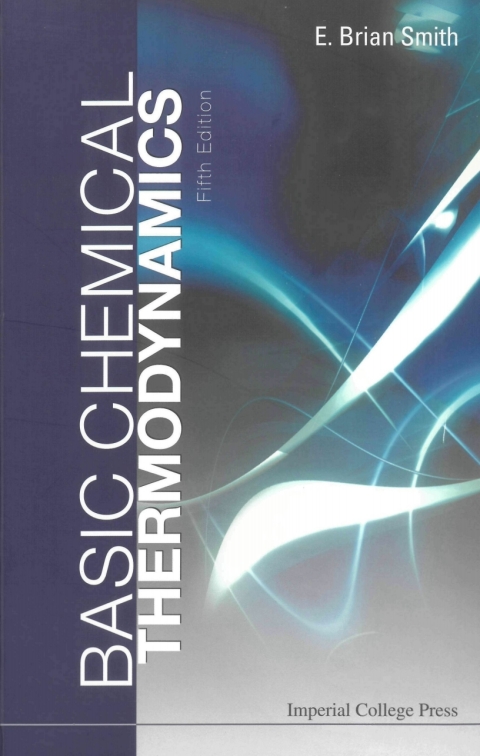Description
Efnisyfirlit
- Contents
- Notation
- 1 Introduction
- 1.1 The scope and nature of chemical thermodynamics
- 1.2 Equilibrium in mechanical systems
- 1.3 Reversibility and equilibrium
- 1.4 Why we need thermodynamics
- 1.5 The mole
- 1.6 The perfect gas
- 2 Energy
- 2.1 Work
- 2.2 Heat and temperature
- 2.3 Measurement of temperature
- 2.4 Heat and molecular motion
- 2.5 Conservation of energy
- 2.6 State functions: a digression
- 2.7 Enthalpy
- 2.8 Heat capacity
- Problems
- 3 Entropy and equilibrium
- 3.1 Reversibility and equilibrium: a recapitulation
- 3.2 Condition of equilibrium
- 3.3 Entropy
- 3.4 Entropy as a state function
- 3.5 Entropy of expansion of a gas
- 3.6 Entropy changes accompanying heat flow
- 3.7 Entropy and equilibrium
- 3.8 A cosmological aside
- 3.9 Entropy as a function of pressure and temperature
- 3.10 Molecular basis of entropy
- 3.11 Statistical basis of the Second Law
- 3.12 Magnitudes of entropy changes
- 3.13 Heat engines
- Problems
- 4 Equilibrium in chemical systems
- 4.1 Free energy
- 4.2 Gibbs free energy
- 4.3 Pressure-dependence of free energy
- 4.4 Temperature variation of free energy
- 4.5 Phase equilibria
- 4.6 Clapeyron equation
- 4.7 Clausius-Clapeyron equation
- 4.8 The vapour pressure of liquids
- 4.9 Chemical potential
- 4.10 Chemical potential and free energy
- 4.11 Equilibrium between gaseous reactants
- 4.12 Temperature-dependence of equilibrium constants
- 4.13 Effect of pressure on equilibrium constants
- 4.14 Basic results of chemical thermodynamics
- 4.15 Le Chatelier’s Principle
- Problems
- 5 Determination of thermodynamic quantities
- 5.1 Hess’s Law
- 5.2 Standard enthalpies of formation
- 5.3 Average bond energies
- 5.4 Temperature-dependence of enthalpy changes
- 5.5 Standard free energies of formation
- 5.6 Determination of free-energy changes
- 5.7 Determination of entropies of substances
- 5.8 Example of the determination of thermodynamic quantities
- 5.9 Calculation of thermodynamic quantities at temperatures other than 298 K
- 5.10 Ellingham diagrams
- 5.11 Free-energy functions
- Problems
- 6 Ideal solutions
- 6.1 The ideal solution
- 6.2 Properties of truly ideal solutions
- 6.3 Mixtures of liquids
- 6.4 Ideal solutions of solids in liquids
- 6.5 Ideal dilute solutions
- 6.6 Colligative properties
- 6.7 Freezing-point depression
- 6.8 Elevation of boiling point
- 6.9 Osmotic pressure
- 6.10 Properties of the solute in dilute solutions
- 6.11 Solubility of solids
- Problems
- 7 Non-ideal solutions
- 7.1 The concept of activity
- 7.2 Activity of solids in liquids
- 7.3 Activity in aqueous solutions
- 7.4 Chemical equilibria in solution
- 7.5 Electrochemical cells
- 7.6 Standard electrode potentials
- Problems
- 8 Thermodynamics of gases
- 8.1 Expansion of a perfect gas
- 8.2 Irreversible expansion
- 8.3 Equation of state of gases
- 8.4 Joule-Thomson experiment
- 8.5 Imperfect gases: fugacity
- 8.6 Calculation of fugacities
- Problems
- 9 The Molecular basis of thermodynamics
- 9.1 Energy levels
- 9.2 Microstates
- 9.3 The Boltzmann factor
- 9.4 Behaviour of heat capacity
- 9.5 Partition functions
- 9.6 Entropy and the partition function
- 9.7 Calculation of the translational partition function
- 9.8 The rotational partition function
- 9.9 Vibrational partition function
- 9.10 Evaluation of the properties of gaseous nitrogen
- 9.11 Chemical equilibrium
- Problems
- Answers to problems
- Appendix 1: Thermochemical data at 298.15 K
- Appendix 2: Thermodynamic data for ions in aqueous solution at 298.15 K
- Further reading
- Periodic table of elements
- SI units and list of physical constants
- Index






Reviews
There are no reviews yet.